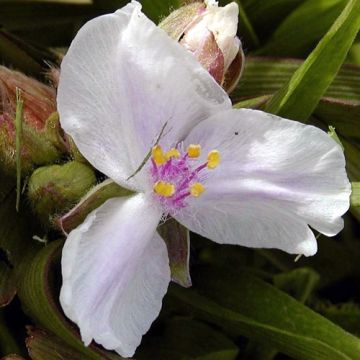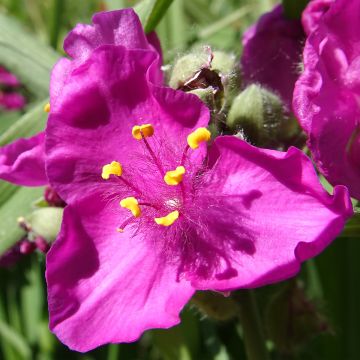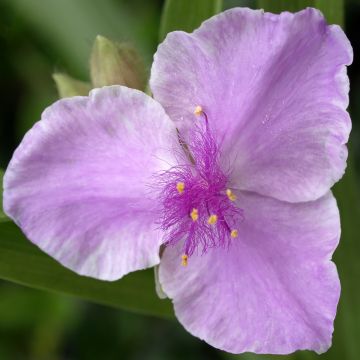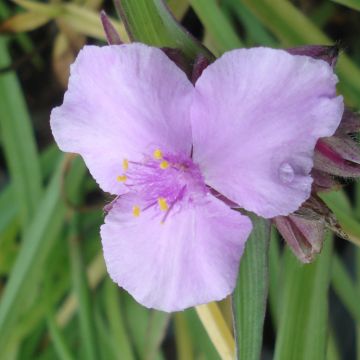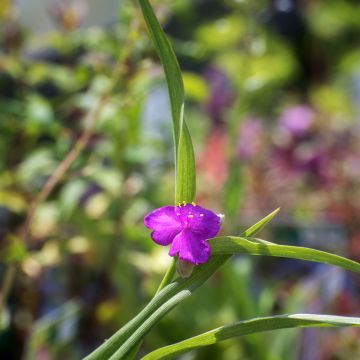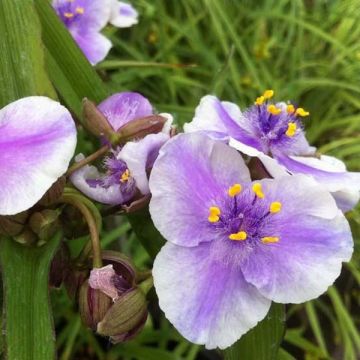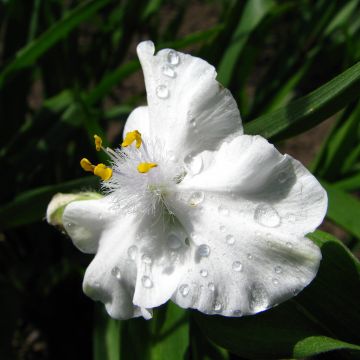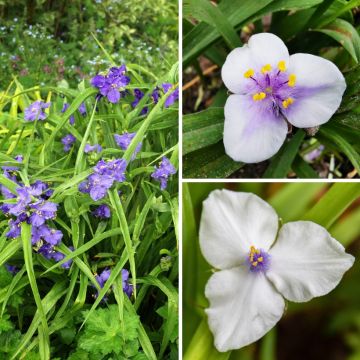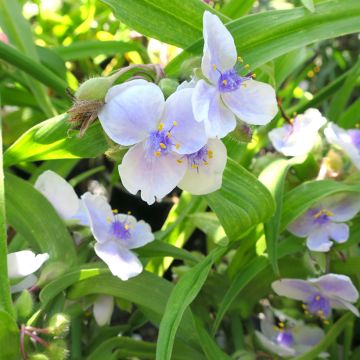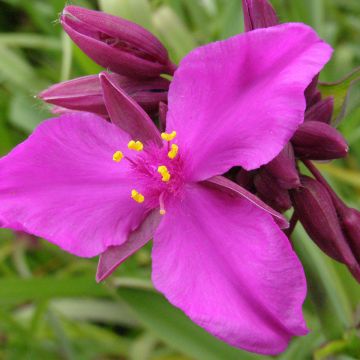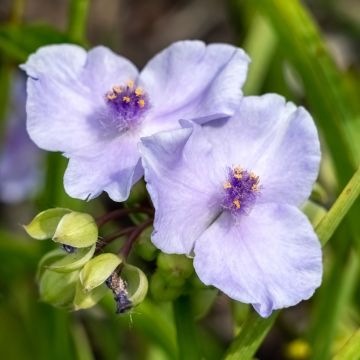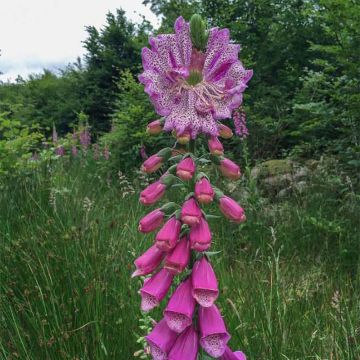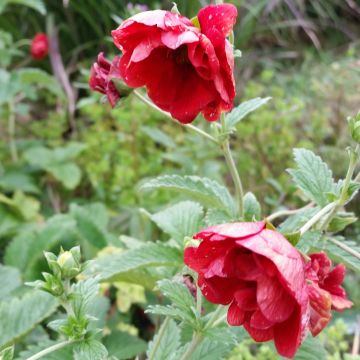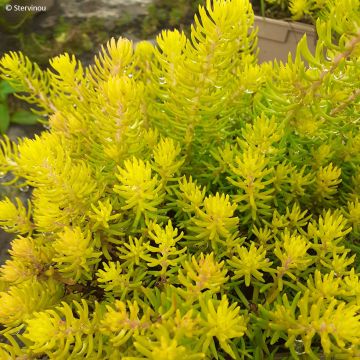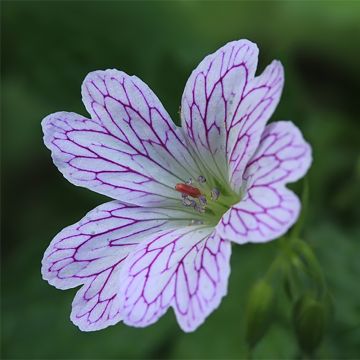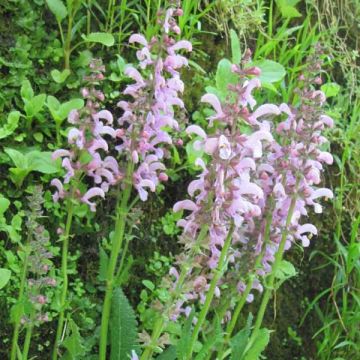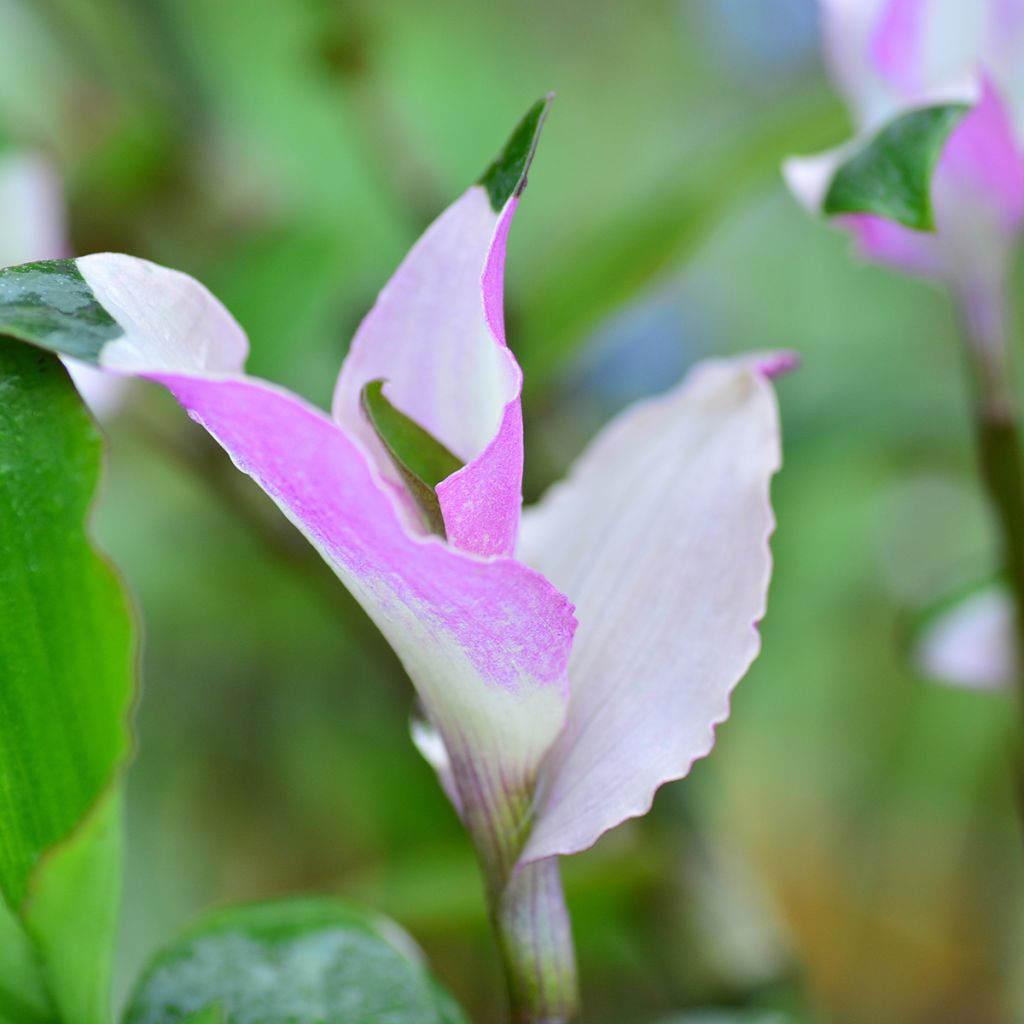

Ephémère de Virginie - Tradescantia andersoniana Blushing Bride
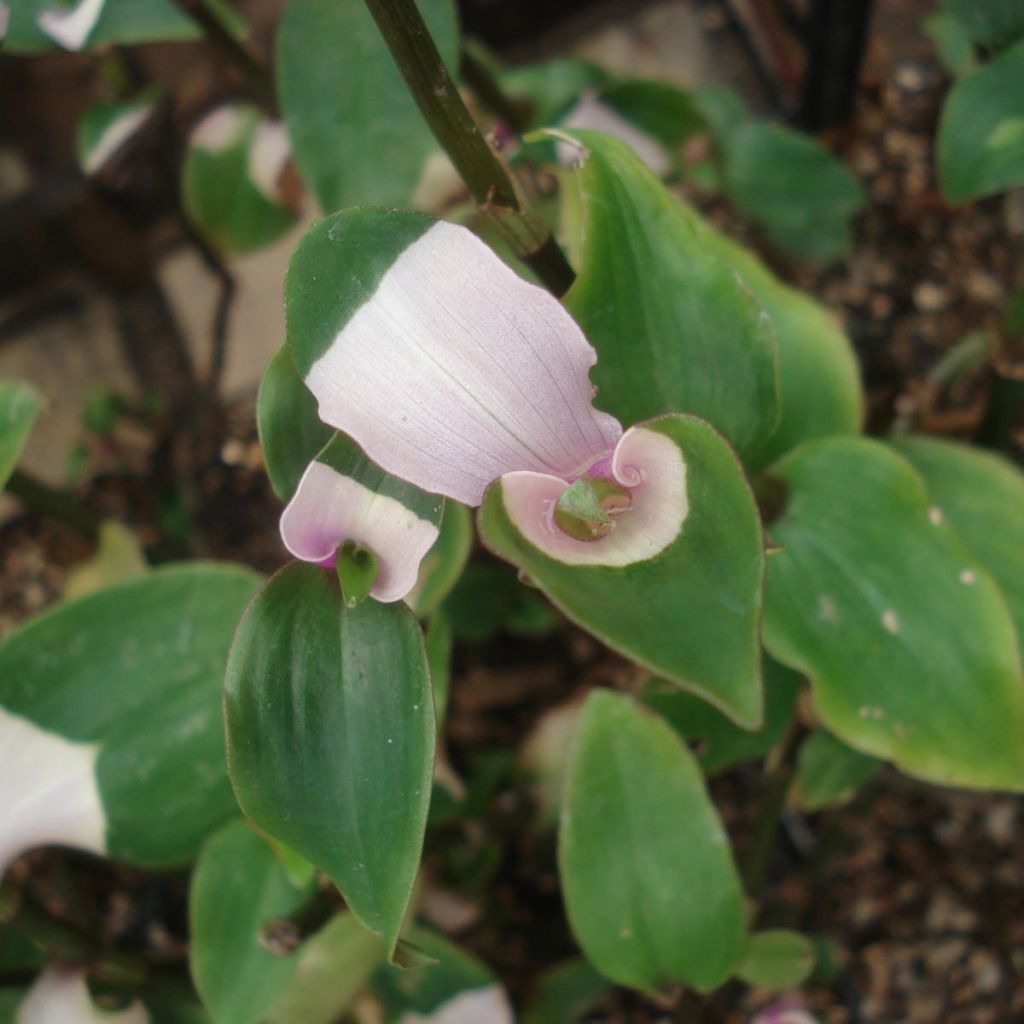

Ephémère de Virginie - Tradescantia andersoniana Blushing Bride
Tradescantia andersoniana Blushing Bride - Spiderwort
Tradescantia x andersoniana Blushing Bride
Spiderwort, Spider lily
Juste magnifique, elle est à mi ombre, couverte de flowers. Bravo pour cette merveille. achetée en 2022
Brussoise, 18/04/2023
Why not try an alternative variety in stock?
View all →This plant carries a 12 months recovery warranty
More information
We guarantee the quality of our plants for a full growing cycle, and will replace at our expense any plant that fails to recover under normal climatic and planting conditions.
From €5.90 for pickup delivery and €6.90 for home delivery
Express home delivery from €8.90.
Does this plant fit my garden?
Set up your Plantfit profile →
Description
Tradescantia x andersoniana 'Blushing Bride', is also known as the Virginia Spiderwort. This creeping perennial plant stands out with its unique variegated pink foliage that adds colour to the garden. It blooms for a long period in white. Delicate and robust at the same time, it is hardy to -10°C (14°F) with protection, has vigorous growth and thrives in poor and moist soil. It can be planted outside with winter protection, in a moist rockery or as a border. It is also an excellent indoor plant.
Tradescantia 'Blushing Bride' is a hybrid with origins in both Americas. The Virginia Spiderwort belongs to the Commelinaceae family and forms a creeping clump that reaches 30 cm (12in) in height, with the tips of the stems standing up and spreading out over 50 cm (20in).
Its green foliage resembles Commelina, and is both broad and triangular, emerging in spring and showing pink spots at the base of each leaf. These pink spots turn white on mature leaves, further enriching the variegation of the foliage. Flowering begins in June and lasts throughout the summer with discreet and ephemeral white flowers, carried in umbels at the top of upright stems. The yellow stamens contrast beautifully with the colour of the petals. Each flower only 'lives' for a few hours, but they are continually renewed.
Easy to grow and maintain, you can plant Tradescantia 'Blushing Bride' in poor soil, preferably moist but well-drained. This plant can adapt to a sunny exposure, but the colours of the foliage will be more contrasting in shade. During dry periods, the foliage may partially disappear, allowing the vegetation to be cut back to encourage the development of new flowering shoots. To ensure continuous flowering until winter remove faded flowers. Its roots are fleshy, allowing the clump to expand quickly and the plant will eventually naturalize itself. Its hardiness can be compromised, so it is advisable to mulch the crown before severe frosts. The young shoots are susceptible to damage from snails and slugs, so make sure to protect them.
You can plant Tradescantia Blushing Bride in the garden, in rockeries, or at the base of a shaded wall, or even as borders. Its variegated foliage will brighten up an understory in a naturalized area. This perennial will thrive in moist areas along streams or ponds, alongside astilbes, meadowsweets, trollius, and perennial geraniums. It is also an excellent indoor plant, it will do well in a pot with moderate watering and only requires a bright exposure to thrive.
When the stems are cut, a viscous secretion is exuded, forming silky threads after hardening (like a spider's web), hence its common name of Spiderworts.
The genus name pays tribute to John Tradescant (1570-1638) and his son John Tradescant (1608-1662), successive botanists and gardeners of Charles I of England. The Andersoniana group brings together hybrids of T. virginiana, subaspera T. and T. ohiensis.
Report an error about the product description
Flowering
Foliage
Plant habit
Botanical data
Tradescantia
x andersoniana
Blushing Bride
Commelinaceae
Spiderwort, Spider lily
North America
Other Tradescantia - Spiderwort
Planting and care
Easy to grow and maintain, plant Tradescantia 'Blushing Bride' in moist but well-drained soil. This plant will adapt to a sunny exposure, but the foliage colours will be more contrasting in the shade. Its fleshy roots grow in a stilt-like shape. In order to ensure continuous flowering until winter cut the faded flowers. The hardiness of this plant can be compromised, so mulch the crown before heavy frosts. The young shoots are sensitive to damage caused by snails and slugs, so protect them.
Planting period
Intended location
Care
-
, onOrder confirmed
Reply from on Promesse de fleurs
Summer flowering perennials
Haven't found what you were looking for?
Hardiness is the lowest winter temperature a plant can endure without suffering serious damage or even dying. However, hardiness is affected by location (a sheltered area, such as a patio), protection (winter cover) and soil type (hardiness is improved by well-drained soil).

Photo Sharing Terms & Conditions
In order to encourage gardeners to interact and share their experiences, Promesse de fleurs offers various media enabling content to be uploaded onto its Site - in particular via the ‘Photo sharing’ module.
The User agrees to refrain from:
- Posting any content that is illegal, prejudicial, insulting, racist, inciteful to hatred, revisionist, contrary to public decency, that infringes on privacy or on the privacy rights of third parties, in particular the publicity rights of persons and goods, intellectual property rights, or the right to privacy.
- Submitting content on behalf of a third party;
- Impersonate the identity of a third party and/or publish any personal information about a third party;
In general, the User undertakes to refrain from any unethical behaviour.
All Content (in particular text, comments, files, images, photos, videos, creative works, etc.), which may be subject to property or intellectual property rights, image or other private rights, shall remain the property of the User, subject to the limited rights granted by the terms of the licence granted by Promesse de fleurs as stated below. Users are at liberty to publish or not to publish such Content on the Site, notably via the ‘Photo Sharing’ facility, and accept that this Content shall be made public and freely accessible, notably on the Internet.
Users further acknowledge, undertake to have ,and guarantee that they hold all necessary rights and permissions to publish such material on the Site, in particular with regard to the legislation in force pertaining to any privacy, property, intellectual property, image, or contractual rights, or rights of any other nature. By publishing such Content on the Site, Users acknowledge accepting full liability as publishers of the Content within the meaning of the law, and grant Promesse de fleurs, free of charge, an inclusive, worldwide licence for the said Content for the entire duration of its publication, including all reproduction, representation, up/downloading, displaying, performing, transmission, and storage rights.
Users also grant permission for their name to be linked to the Content and accept that this link may not always be made available.
By engaging in posting material, Users consent to their Content becoming automatically accessible on the Internet, in particular on other sites and/or blogs and/or web pages of the Promesse de fleurs site, including in particular social pages and the Promesse de fleurs catalogue.
Users may secure the removal of entrusted content free of charge by issuing a simple request via our contact form.
The flowering period indicated on our website applies to countries and regions located in USDA zone 8 (France, the United Kingdom, Ireland, the Netherlands, etc.)
It will vary according to where you live:
- In zones 9 to 10 (Italy, Spain, Greece, etc.), flowering will occur about 2 to 4 weeks earlier.
- In zones 6 to 7 (Germany, Poland, Slovenia, and lower mountainous regions), flowering will be delayed by 2 to 3 weeks.
- In zone 5 (Central Europe, Scandinavia), blooming will be delayed by 3 to 5 weeks.
In temperate climates, pruning of spring-flowering shrubs (forsythia, spireas, etc.) should be done just after flowering.
Pruning of summer-flowering shrubs (Indian Lilac, Perovskia, etc.) can be done in winter or spring.
In cold regions as well as with frost-sensitive plants, avoid pruning too early when severe frosts may still occur.
The planting period indicated on our website applies to countries and regions located in USDA zone 8 (France, United Kingdom, Ireland, Netherlands).
It will vary according to where you live:
- In Mediterranean zones (Marseille, Madrid, Milan, etc.), autumn and winter are the best planting periods.
- In continental zones (Strasbourg, Munich, Vienna, etc.), delay planting by 2 to 3 weeks in spring and bring it forward by 2 to 4 weeks in autumn.
- In mountainous regions (the Alps, Pyrenees, Carpathians, etc.), it is best to plant in late spring (May-June) or late summer (August-September).
The harvesting period indicated on our website applies to countries and regions in USDA zone 8 (France, England, Ireland, the Netherlands).
In colder areas (Scandinavia, Poland, Austria...) fruit and vegetable harvests are likely to be delayed by 3-4 weeks.
In warmer areas (Italy, Spain, Greece, etc.), harvesting will probably take place earlier, depending on weather conditions.
The sowing periods indicated on our website apply to countries and regions within USDA Zone 8 (France, UK, Ireland, Netherlands).
In colder areas (Scandinavia, Poland, Austria...), delay any outdoor sowing by 3-4 weeks, or sow under glass.
In warmer climes (Italy, Spain, Greece, etc.), bring outdoor sowing forward by a few weeks.

































